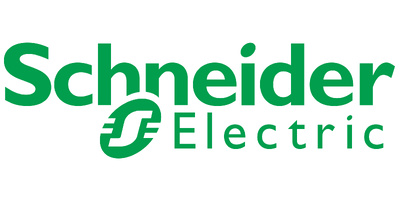RF 1 Form A (AQV22❍)
TYPES
*Indicate the peak AC and DC values.
Note: The surface mount terminal shape indicator “A” and the packing style indicator “X” or “Z” are not marked on the relay.
RATING
DIP6-pin type suited for
radio frequent switching RF 1 F orm A
(AQV22❍)
Output rating*
Package
Part No. Packing quantity
Load
voltage Load
current
Through hole
terminal Surface-mount terminal
Tube packing style Tape and reel packing style Tube Tape and reel
Picked from the
1/2/3-pin side Picked from the
4/5/6-pin side
AC/DC
dual use
40 V 80 mA DIP6-pin AQV221 AQV221A AQV221AX AQV221AZ 1 tube contains:
50 pcs.
1 batch contains:
500 pcs.
1,000 pcs
80 V 50 mA AQV225 AQV225A AQV225AX AQV225AZ
mm inch
FEATURES
1. High frequency characteristics with
low capacitance between output
terminals
Low output capacitance: typ. 4.8 pF
Isolation loss: 40 dB or more (at 1 MHz)
(AQV225)
2. High speed switching
Turn on time: typ. 0.1 ms
Turn off time: typ. 0.03 ms
3. Low-level off state leakage current
of typ. 0.03 nA
4. Controls low-level analog signals
PhotoMOS relay features extremely low
closed-circuit offset voltages to enable
control of small analog signals without
distortion.
TYPICAL APPLICATIONS
1. Measuring instruments
Scanner, IC checker, Board tester, etc.
2. Audio visual equipment
CD , VCR
3. Security equipment
8.8 6.4
3.6
8.8 6.4
3.9
.346 .252
.142
.346 .252
.154
1
2
3
6
5
4
Compliance with RoHS Directive
Height includes
standoff
1. Absolute maximum ratings (Ambient temperature: 25°C 77°F)
Item Symbol Type of
connection AQV221(A) AQV225(A) Remarks
Input
LED forward current IF50 mA
LED reverse voltage VR5 V
Peak forward current IFP 1 A f = 100 Hz, Duty factor = 0.1%
Power dissipation Pin 75 mW
Output
Load voltage (peak AC) VL40 V 80 V
Continuous load current IL
A 0.08 A 0.05 A A connection: Peak AC, DC
B, C connection: DC
B 0.09 A 0.06 A
C 0.12 A 0.075 A
Peak load current Ipeak 0.18 A 0.15 A A connection: 100 ms (1 shot),
VL = DC
Power dissipation Pout 230 mW
Total power dissipation PT280 mW
I/O isolation voltage Viso 1,500 V A C
Temperature
limits Operating Topr –40°C to +85°C –40°F to +185°FNon-condensing at low
temperatures
Storage Tstg –40°C to +100°C –40°F to +212°F
PhotoMOS.book Page 151 Thursday, March 26, 2009 2:21 PM
All Rights Reserved © COPYRIGHT Panasonic Electric Works Co., Ltd.
RF 1 Form A (AQV22❍)
2. Electrical characteristics (Ambient temperature: 25°C 77°F)
*Turn on/Turn off time
RECOMMENDED OPERATING CONDITIONS
Please obey the following conditions to ensure proper relay operation and resetting.
■ For Dimensions
■ For Schematic and Wiring Diagrams
■ For Cautions for Use
■ These products are not designed for automotive use.
If you are considering to use these products for automotive applications, please contact your local Panasonic Electric
Works technical representative.
For more information
Item Symbol Type of
connection AQV221(A) AQV225(A) Remarks
Input
LED operate current Typical IFon —0.9 mA IL= Max.
Maximum 3 mA
LED turn off current Minimum IFoff —0.4 mA IL= Max.
Typical 0.85 mA
LED dropout voltage Typical VF—1.25 V (1.14 V at IF = 5 mA) IF = 50 mA
Maximum 1.5 V
Output
On resistance
Typical Ron A22
Ω
36
Ω
IF = 5 mA
IL = Max.
Within 1 s on time
Maximum 35
Ω
50
Ω
Typical Ron B13 Ω21 ΩIF = 5 mA
IL = Max.
Within 1 s on time
Maximum 18
Ω
25
Ω
Typical Ron C6.5 Ω10.5 ΩIF = 5 mA
IL = Max.
Within 1 s on time
Maximum 9
Ω
12.5
Ω
Output capacitance Typical Cout —5.6 pF 4.8 pF IF = 0 mA
VB = 0 V
f = 1 MHz
Maximum 8 pF
Off state leakage current Typical ILeak —0.03 nA IF = 0 mA
VL = Max.
Maximum 10 nA
Transfer
characteristics
Turn on time* Typical Ton —0.1 ms IF = 5 mA
IL = Max.
Maximum 0.3 ms
Turn off time* Typical Toff —0.03 ms IF = 5 mA
IL = Max.
Maximum 0.1 ms
I/O capacitance Typical Ciso —0.8 pF f = 1 MHz
VB = 0 V
Maximum 1.5 pF
Initial I/O isolation resistance Minimum Riso — 1,000 MΩ500 V DC
Item Symbol Recommended value Unit
Input LED current IF5 mA
Ton
Input
Output 10%
90%
Toff
PhotoMOS.book Page 152 Thursday, March 26, 2009 2:21 PM
All Rights Reserved © COPYRIGHT Panasonic Electric Works Co., Ltd.
RF 1 Form A (AQV22❍)
REFERENCE DATA
1. Load current vs. ambient temperature
characteristics
Allowable ambient temperature: –40°C to +85°C
–40°F to +185°F
Type of connection: A
2. On resistance vs. ambient temperature
characteristics
Measured portion: between terminals 4 and 6;
LED current: 5 mA; Load voltage: Max. (DC);
Continuous load current: Max. (DC)
3. Turn on time vs. ambient temperature
characteristics
Sample: AQV221, AQV225; LED current: 5 mA;
Load voltage: Max. (DC);
Continuous load current: Max. (DC)
100
80
60
40
20
00–40 20 40 60 8085
–20
AQV221
AQV225
Ambient temperature, °C
Load current, mA
50
40
30
20
0–40 20 40 60 8085
–20
AQV225
AQV221
Ambient temperature, °C
On resistance, Ω
0.5
0.4
0.3
0.2
0.1
00–40 20 40 60 8085
–20 Ambient temperature, °C
Turn on time, ms
4. Turn off time vs. ambient temperature
characteristics
Sample: AQV221, AQV225; LED current: 5 mA;
Load voltage: Max. (DC);
Continuous load current: Max. (DC)
5. LED operate current vs. ambient
temperature characteristics
Sample: AQV221, AQV225;
Load voltage: Max. (DC);
Continuous load current: Max. (DC)
6. LED turn off current vs. ambient temperature
characteristics
Sample: AQV221, AQV225;
Load voltage: Max. (DC);
Continuous load current: Max. (DC)
0.2
0.1
00–40 20 40 60 8085
–20
Turn off time, ms
Ambient temperature, °C
5
4
3
2
1
00–40 20 40 60 8085
–20 Ambient temperature, °C
LED operate current, mA
5
4
3
2
1
00–40 20 40 60 8085
–20 Ambient temperature, °C
LED turn off current, mA
7. LED dropout voltage vs. ambient
temperature characteristics
Sample: AQV221, AQV225;
LED current: 5 to 50 mA
8. Current vs. voltage characteristics of output
at MOS portion
Measured portion: between terminals 4 and 6;
Ambient temperature: 25°C 77°F
9. Off state leakage current vs. load voltage
characteristics
Measured portion: between terminals 4 and 6;
Ambient temperature: 25°C 77°F
1.5
1.4
1.3
1.2
1.1
1.0
0–20 20 40 60 8085
–40
50mA
30mA
20mA
10mA
5mA
Ambient temperature, °C
LED dropout voltage, V
–1.0 1.0 2.0
–2.0
–100
100
80
60
40
20
AQV221
AQV225
–80
–60
–40
–20 Voltage, V
Current, mA
10–3
10–6
10–9
10–12
0 2010 30 50 7040 60 80
AQV221
AQV225
Load voltage, V
Off state leakage current, A
PhotoMOS.book Page 153 Thursday, March 26, 2009 2:21 PM
All Rights Reserved © COPYRIGHT Panasonic Electric Works Co., Ltd.
RF 1 Form A (AQV22❍)
10. Turn on time vs. LED forward current
characteristics
Sample: AQV221, AQV225;
Measured portion: between terminals 4 and 6;
Load voltage: Max. (DC);
Continuous load current: Max. (DC);
Ambient temperature: 25°C 77°F
11. Turn off time vs. LED forward current
characteristics
Sample: AQV221, AQV225;
Measured portion: between terminals 4 and 6;
Load voltage: Max. (DC);
Continuous load current: Max. (DC);
Ambient temperature: 25°C 77°F
12. Output capacitance vs. applied voltage
characteristics
Measured portion: between terminals 4 and 6;
Frequency: 1 MHz;
Ambient temperature: 25°C 77°F
0.3
0.2
0.1
10 20 30 40 500 LED forward current, mA
Turn on time, ms
0.05
0.04
0.03
0.02
0.01
010 20 30 40 500 LED forward currnt, mA
Turn off time, ms
6
5
4
3
2
1
00 2010 30 50 7040 60 80
AQV221
AQV225
Applied voltage, V
Output capacitance, pF
13. Isolation vs. frequency character istics
(50Ω impedance)
Measured portion: between terminals 4 and 6;
Frequency: 1 MHz;
Ambient temperature: 25°C 77°F
14. Insertion loss vs. frequency characteristics
(50Ω impedance)
Measured portion: between terminals 4 and 6;
Frequency: 1 MHz;
Ambient temperature: 25°C 77°F
100
90
80
70
60
50
40
30
20
10
0105106107
AQV225
AQV221
Frequency, Hz
Isolation, dB
5
0
105106107
Frequency, Hz
Isolation, dB
AQV221
AQV225
PhotoMOS.book Page 154 Thursday, March 26, 2009 2:21 PM
All Rights Reserved © COPYRIGHT Panasonic Electric Works Co., Ltd.



